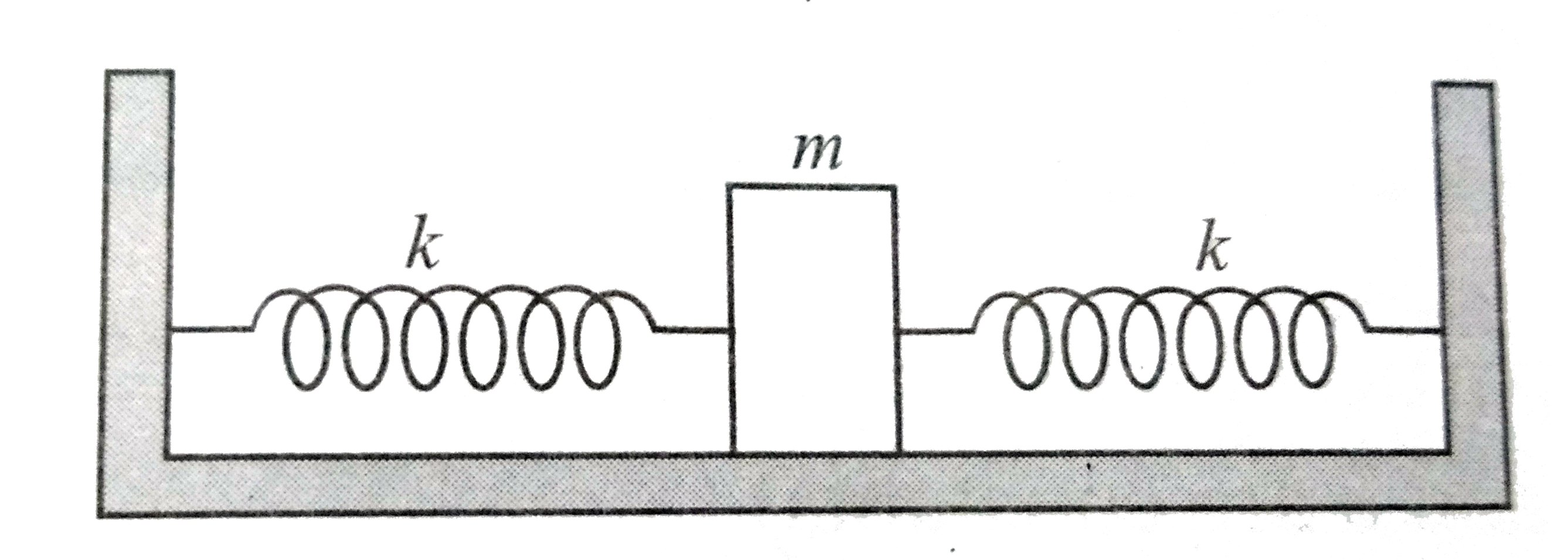An elevatore is moving up with a constant velocity. Two different masses are attached to two different springs of same spring constant. Say you do two operations expanding the spring or compressing the spring by the same distance. Which operation consumes more energy: expanding the spring or compressing it?
To solve the problem, we need to analyze the energy consumed during the two operations: compressing and expanding the spring.
1. Understanding the Spring Force:
The force exerted by a spring is given by Hooke's Law:
F=kx
where F is the force exerted by the spring, k is the spring constant, and x is the displacement from the equilibrium position.
2. Energy Stored in the Spring:
The energy stored in a spring when it is compressed or stretched is given by:
E=12kx2
This energy is the same for both compressing and expanding the spring by the same distance x when considered in isolation.
3. Considering Gravity:
In the case of the elevator moving up with a constant velocity, we have to consider the effect of gravity on the forces acting on the masses attached to the springs.
4. Compressing the Spring:
When compressing the spring, the force needed to compress it is:
F1=kx−mg
Here, mg is the weight of the mass acting downwards, and it assists in compressing the spring. Therefore, less energy is required to compress the spring because gravity is helping.
5. Expanding the Spring:
When expanding the spring, the force needed is:
F2=kx+mg
In this case, the weight of the mass opposes the expansion of the spring, requiring more energy to stretch it.
6. Comparing Energy Consumption:
- For compression, the energy required is less because gravity assists:
Ecompression=12kx2−mgx
- For expansion, the energy required is more because gravity opposes:
Eexpansion=12kx2+mgx
7. Conclusion:
Since the energy required to compress the spring is less than that required to expand it, we conclude that compressing the spring consumes less energy than expanding it.
The force exerted by a spring is given by Hooke's Law:
F=kx
where F is the force exerted by the spring, k is the spring constant, and x is the displacement from the equilibrium position.
The energy stored in a spring when it is compressed or stretched is given by:
E=12kx2
This energy is the same for both compressing and expanding the spring by the same distance x when considered in isolation.
In the case of the elevator moving up with a constant velocity, we have to consider the effect of gravity on the forces acting on the masses attached to the springs.
When compressing the spring, the force needed to compress it is:
F1=kx−mg
Here, mg is the weight of the mass acting downwards, and it assists in compressing the spring. Therefore, less energy is required to compress the spring because gravity is helping.
When expanding the spring, the force needed is:
F2=kx+mg
In this case, the weight of the mass opposes the expansion of the spring, requiring more energy to stretch it.
- For compression, the energy required is less because gravity assists:
Ecompression=12kx2−mgx
- For expansion, the energy required is more because gravity opposes:
Eexpansion=12kx2+mgx
Since the energy required to compress the spring is less than that required to expand it, we conclude that compressing the spring consumes less energy than expanding it.
Topper's Solved these Questions
- WORK, POWER & ENERGYBOOK - CENGAGE PHYSICS ENGLISHCHAPTER - WORK, POWER & ENERGYEXERCISE - Exercise 8.4
16 Videos
- WORK, POWER & ENERGYBOOK - CENGAGE PHYSICS ENGLISHCHAPTER - WORK, POWER & ENERGYEXERCISE - Exercise 8.5
15 Videos
- WORK, POWER & ENERGYBOOK - CENGAGE PHYSICS ENGLISHCHAPTER - WORK, POWER & ENERGYEXERCISE - Exercise 8.2
25 Videos
- VECTORSBOOK - CENGAGE PHYSICS ENGLISHCHAPTER - VECTORSEXERCISE - Exercise Multiple Correct
5 Videos
Similar Questions
A body of mass 0.1 g moving with a velocity of 10 m/s hits a spring (fixed at the other end) of force constant 1000 N/m and comes to rest after compressing the spring. The compression of the spring is
View SolutionTwo equal masses are attached to the two ends of a spring of spring constant k. The masses are pulled out symmetrically to stretch the spring by a length x over its natural length. The work done by the spring one each mass is
View SolutionA block of 200 g mass is dropped from a height of 2 m on to a spring and compress the spring to a distance of 50 cm. The force constant of the spring is
View SolutionTwo masses m and 2m are attached to two ends of an ideal spring as shown in figure. When the spring is in the compressed state, the energy of the spring is 60 J, if the spring is released, then at its natural length

View SolutionTwo identical springs of spring constant k are attached to a block of mass m and to fixed supports as shown in the figure. The time period of oscillation is

View SolutionA spring is stretched by distance x and then compressed to same distance from its original length. The work done by the spring force is (k=spring constant)
View SolutionA block of mass m moving at a speed v compresses a spring throgh a distance x before its speed is halved. Find the spring constant of the spring.
View SolutionA force of 10 N holds an ideal spring with a 20Nm spring constant in compression. The potential energy stored in the spring is
View SolutionTwo springs of spring constantsK1 and K2 are joined in series. The effective spring constant of the combination is given by
View SolutionTwo springs of spring constantsK1 and K2 are joined in series. The effective spring constant of the combination is given by
View Solution
